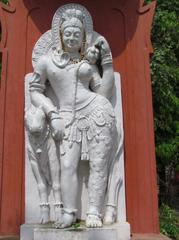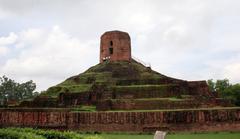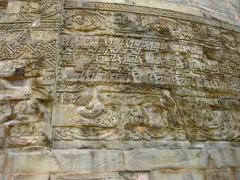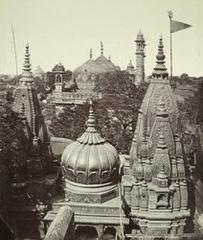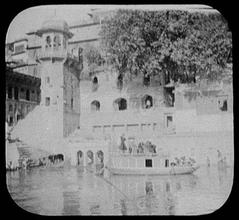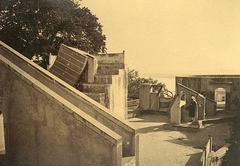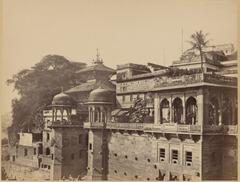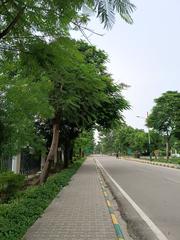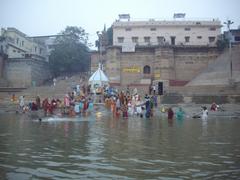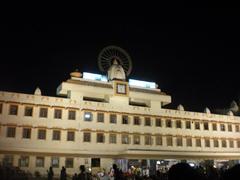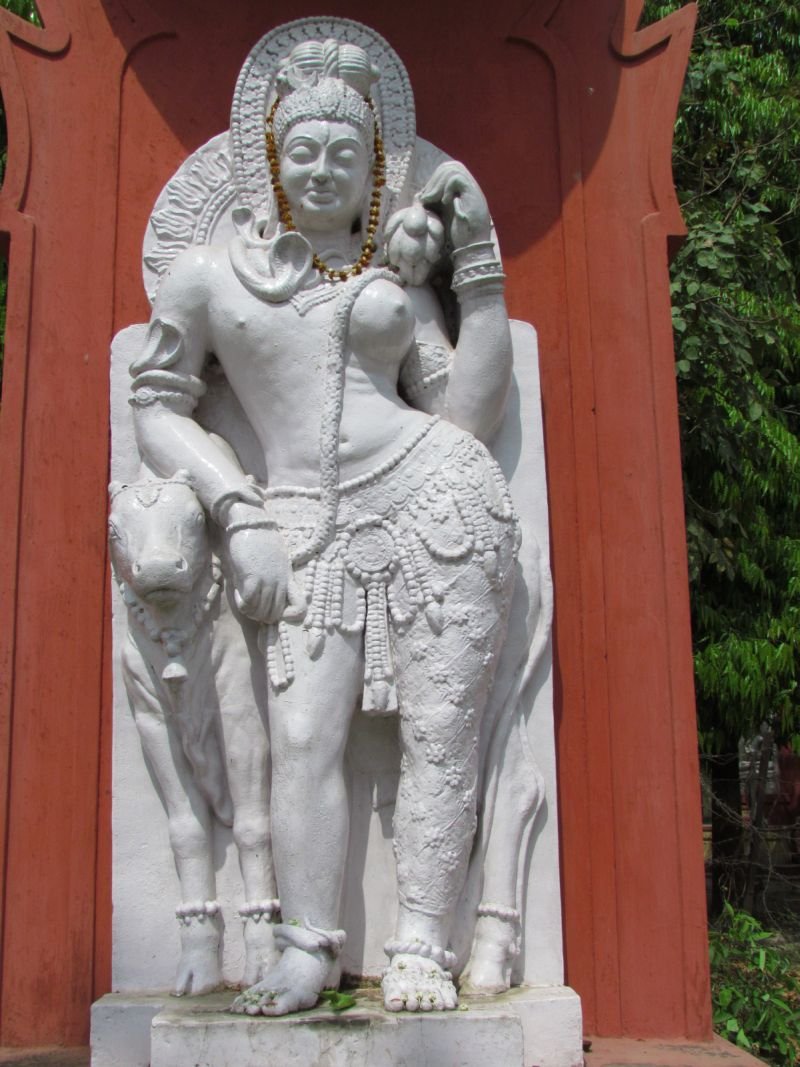
Sampurnanand Sanskrit University Varanasi: Visiting Hours, Tickets, and Historical Significance
Date: 03/07/2025
Introduction
Sampurnanand Sanskrit University (SSU), located in the spiritual city of Varanasi, stands as a beacon of Sanskrit scholarship and Indian cultural heritage. Established in 1791 as the Government Sanskrit College, SSU has evolved over centuries into a premier university dedicated to the preservation and dissemination of Sanskrit, Indian philosophy, and traditional knowledge systems. Its remarkable journey from a colonial-era college to a modern university with innovative initiatives like the Vedic 3D Museum highlights its enduring relevance. This guide offers a detailed overview of SSU’s history, academic offerings, cultural significance, visitor information—including visiting hours, tickets, accessibility, travel tips—and nearby attractions, ensuring you make the most of your visit to this iconic Varanasi institution (ssvv.ac.in; Ayush Counselling; GK360; Varanasi City).
Historical Background
Early Foundations: Government Sanskrit College (1791–1958)
Founded in 1791 at the behest of Jonathan Duncan and supported by Lord Cornwallis of the East India Company, the Government Sanskrit College in Benares was established to revive and preserve the study of Sanskrit and classical Indian knowledge. Pt. Kashinath served as its first Acharya, and the college offered instruction in Vedas, Vedanta, Puranas, Ayurveda, Sahitya, Jyotisha, Mimamsa, and Nyaya. The institution was funded by the Benares State surplus, positioning it as a leading center for traditional scholarship (ssvv.ac.in).
Growth into Varanaseya Sanskrit Vishwavidyalaya (1958–1974)
In 1958, the college transitioned to university status as Varanaseya Sanskrit Vishwavidyalaya under the guidance of Dr. Sampurnanand and Pt. Kamlapati Tripathi. This era saw significant modernization, curriculum expansion, and the integration of contemporary educational methods alongside classical pedagogy, addressing the evolving needs of post-independence India (ssvv.ac.in; ssvvostc.ac.in).
Sampurnanand Sanskrit University: Renaming and Modernization (1974–Present)
The university was renamed in 1974 in honor of Pandit Sampurnanand, a visionary scholar and reformer. Under his influence, SSU expanded its faculties and academic programs, embracing both traditional Sanskrit scholarship and modern disciplines. The university now boasts faculties in Veda-Vedanga, Sahitya Sanskriti, Philosophy, Sramana Vidya, and Adhunika Gyan Vijyana, supporting undergraduate, postgraduate, and doctoral studies (collegeduniyabharat.com; educationdunia.com).
Academic Programs
Core Academic Offerings
SSU offers a robust curriculum in Sanskrit language, literature, Indian philosophy, Vedic studies, and Ayurveda, complemented by modern subjects like temple management and digital humanities.
- Undergraduate Programs: BA in Sanskrit, Vedic studies, Indian logic, and Ayurveda. Admissions are merit-based or via entrance exams (Ayush Counselling).
- Postgraduate & Doctoral Programs: Specialized degrees in Sanskrit literature, Jyotish, Vyakarana, and interdisciplinary research.
- Specialized Programs: Unique courses like Temple Management and the Vedic 3D Museum—a digital initiative using VR/AR for immersive learning (UniversityCube; GK360).
- Accreditation: SSU is accredited with an ‘A’ grade by NAAC and recognized by UGC (SSU Official).
Saraswati Bhawan Library: A Scholarly Treasure
The Saraswati Bhawan Library, established in 1894 and housed in a heritage building completed in 1914, is one of the world’s most significant repositories of Sanskrit manuscripts. With over 95,000 manuscripts and more than a million printed books in multiple scripts—including rare palm-leaf and gold-leaf texts—this library serves as a vital resource for scholars and researchers (freepressjournal.in).
Visitors may view select collections by prior arrangement, ensuring the preservation of these invaluable materials.
Cultural Significance
Preserving Sanskrit Heritage
SSU plays a pivotal role in safeguarding Sanskrit traditions, supporting eminent scholars, and promoting the revival of ancient practices like Shastrartha (intellectual debate) (Ayush Counselling; GK360).
Student Life and Cultural Activities
Campus life is vibrant, enriched by literary clubs, debate societies, wellness groups, and regular celebrations of traditional festivals. The Vedic 3D Museum and academic events foster a dynamic learning environment (Ayush Counselling).
Collaborations and Outreach
The university actively collaborates with national and international institutions, enhancing its global outlook and nurturing cross-cultural academic exchange (Ayush Counselling).
Facilities and Campus Highlights
- Hostels: Separate accommodations for male and female students.
- Classrooms & Labs: Modernized spaces for traditional and contemporary education.
- Dining: Vegetarian cafeterias and daily convenience stores.
- Sports & Wellness: Gymnasium, medical center, wrestling arena, and playgrounds.
- IT Infrastructure: Campus-wide Wi-Fi, digital library catalog, and computer labs.
- Accessibility: Wheelchair ramps, accessible restrooms, and multilingual signage.
The campus is characterized by traditional Indian architecture—arched gateways, ornate columns, and serene courtyards—creating an inspiring environment for study and reflection.
Visitor Information
Visiting Hours
- General Campus Access: Monday to Saturday, 10:30 AM – 4:30 PM (closed Sundays and public holidays).
- Library & Special Exhibitions: Prior permission required; research visits should be booked in advance.
Tickets and Entry
- Entry Fee: Campus entry is free; select exhibitions (such as the Vedic 3D Museum) may require tickets (approx. INR 50–100).
- Guided Tours: Available by advance booking; recommended for groups.
Accessibility
- Facilities are provided for differently-abled visitors; assistance can be arranged through the visitor center.
Travel and Accommodation
- Location: Centrally situated in Varanasi (Jagatganj, Chaukaghat), accessible by auto-rickshaw, taxi, and public transport.
- Nearby Accommodation: Options range from budget to luxury hotels; early booking is advised during festival seasons.
Visitor Tips
- Dress modestly, especially when entering academic and religious spaces.
- Photography is permitted in outdoor areas and during cultural events, but restricted in the library and academic blocks.
- Visit during the academic year (July–May) for a richer campus experience.
Nearby Attractions
- Kashi Vishwanath Temple: One of the twelve Jyotirlingas, open 4:00 AM–11:00 PM, no entry fee (Official Kashi Vishwanath Temple Website).
- Dashashwamedh Ghat: Renowned for the evening Ganga Aarti.
- Banaras Hindu University: Another center of academic and cultural significance.
- Sarnath: Archaeological and Buddhist heritage site.
- Manikarnika Ghat and Ramnagar Fort: Deepen your experience of Varanasi’s rich history.
Frequently Asked Questions (FAQs)
Q: What are the campus visiting hours?
A: Monday to Saturday, 10:30 AM – 4:30 PM; closed Sundays and public holidays.
Q: Is there an entry fee?
A: General campus access is free; tickets may be required for special exhibitions.
Q: How do I arrange a guided tour?
A: Contact the university administration in advance for bookings.
Q: Is the campus accessible for people with disabilities?
A: Yes, facilities and assistance are available.
Q: How do I access the Saraswati Bhawan Library?
A: Research visits require prior permission; contact the library administration.
Plan Your Visit and Stay Connected
Explore Sampurnanand Sanskrit University’s unique blend of tradition and innovation. For up-to-date information, guided tour bookings, and event schedules, visit the official website: ssvv.ac.in.
Download the Audiala app for guided tours of Varanasi’s historical sites, including SSU, and follow us on social media for the latest travel tips and cultural highlights.
Summary and Recommendations
Sampurnanand Sanskrit University exemplifies the harmonious marriage of India’s ancient scholarly tradition with modern educational innovation. Its historic campus, rare manuscript collections, cutting-edge programs like the Vedic 3D Museum, and vibrant cultural life make it a must-visit destination for anyone interested in Indian heritage. Whether for research, learning, or cultural discovery, your visit to SSU will be both enlightening and inspiring (ssvv.ac.in; Ayush Counselling; GK360; Varanasi City).
References and Further Reading
- Historical Overview and Visiting Guide to Sampurnanand Sanskrit University: Exploring Varanasi’s Premier Sanskrit Institution and Historical Site, 2025, (https://ssvv.ac.in/brief-history)
- Sampurnanand Sanskrit University Varanasi: Visiting Hours, Tickets, and Cultural Significance, 2025, (https://ayushcounselling.in/sampurnanand-sanskrit-university-varanasi/)
- Vedic 3D Museum at Sampurnanand Sanskrit University: A Glimpse into India’s Ancient Knowledge, 2025, (https://gk360.in/vedic-3d-museum-at-sampurnanand-sanskrit-university-a-glimpse-into-indias-ancient-knowledge/)
- Sampurnanand Sanskrit University Facilities and Visitor Guide, 2025, (http://ssvv.ac.in)
- Varanasi City Education and Cultural Overview, 2025, (https://www.varanasicity.com/education/sanskrit-university.html)
